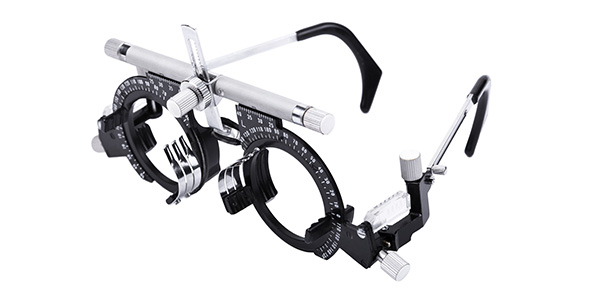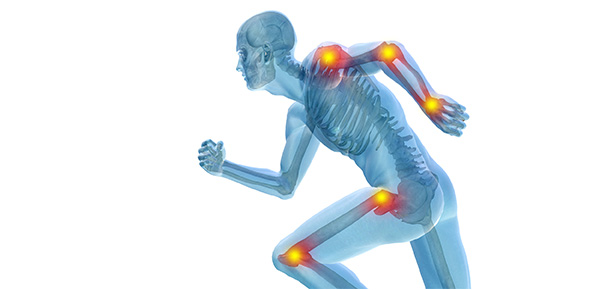Related Flashcards
Related Topics
Cards In This Set
| Front | Back |
|
What must occur for an image to be perceived as single with binocular vision?
|
1. Eyes must be aligned2. image on each retina must be clear3. Image on each retina must be the same size4. Image on each retina must fall on matched retinal areas. (corresponding retinal points)
**Corresponding points project to the SAME location in the visual cortex and have the SAME visual direction. |
|
What is the primary visual direction?
|
The subjective direction associated with the fovea when an object is fixated.
In reference to the eye position (oculocentric) as opposed to the head |
|
What are the two categories anomalies of the binocular vision system fall into?
|
1. Non-strabismic: single vision present but presents stress to the system and pt. may be symptomatic
2. Binocular vision absent, resulting in possible diplopia, strabismus |
|
What are the steps in assessment of a non-strabismic BV disorder?
|
1. Magnitude and direction of the phoria at Distance and at NearTests: Cover test, vonGraefe phoria, Maddox rod, Modified Thorington, Fixation disparity, ACA2. Magnitude of positive and negative fusional vergence rangestests: smooth vergences, step vergences, vergence facility. (Binocular accommodation testing (i.e.NRA/PRA) indirectly measures the binocular function as well 3. Convergence amplitude: Tests: NPC4. Stereopsis (sensory integration)
|
|
What are general pointers for BV testing?
|
1. all tests should be done with refractive error corrected2. Distance testing: use the 20/30 line or TWO lines above their BVA3. Near testing: Always remember to have the pt. keep the words CLEAR to control accommodation, hold card at 40cm4. Risley prisms: move at a rate of 2prism diopters per second (one prism diopter per eye per second)
|
|
Unilateral and alternating cover test:
|
Purpose: Objective determination of the presence, direction, and magnitude of a phoria or tropia-Dissociated test (fusion is BROKEN)
|
|
Alternating cover test:
|
Allows one to measure the AMOUNT of phoria or tropiaExpected: Distance 0-2exo/near 0-6exo (for nonpresbyopic pt.)
*Phi phenomenon causes a pt. with a heterophoria to perceive movement in the OPPOSITE direction to the covered eye's deviation as it's being uncovered *In esophoria, the apparent motion is in the OPPOSITE direction and in exophoria, it is in the SAME direction |
|
Von Graefe phoria:
|
Same purpose as cover test, but it is subjectiveHow: in phoropter: 12BI OD/6BU OSto test horizontal, decrease the BI at 2prism tiopters per sec. until pt. reports they are alignment (have pt. look at LOWER LEFT target) Buttons on a shirt
To test vertical: have pt look at upper right target, decrease BU until pt. reports alignment (headlights on a car) |
|
Maddox Rod:
CROSSED = EXO EXO has a CROSS in itUNCROSSED = ESO |
Holding rod VERTICALLY results in HORIZONTAL image (tests for vertical deviation) and other way around
This is a dissociated test Can measure MAGNITUDE, but CANNOT distinguish a phoria from a tropia! -if line seen by the RIGHT eye appears to the LEFT of the point source: pt. has a EXO (nasal field = temporal retina -if line seen by the right eye appears to the RIGHT of the point source: pt. has an EXO (temporal field hitting nasal retina) |
|
Two maddox rods = double maddox rod
|
FOR TORSIONAL ALIGNMENTS OF THE EYES
|
|
UNCROSSED diplopia = caused by
CROSSED diplopia = caused by |
ESO deviations
EXO deviations |
|
Modified thorington:
|
Same as cover test: but SUBJECTIVEOutiside phoropter with maddox rod, thorington card and pen light
For horizontal phoria: maddox rod over the RIGHT eye with horizontally oriented striations: shine penlight through the hole on the card and the pt. reports the number or letter through which the line is passing and whether it is to the right or to the left Can rotate maddox rod 90 degrees to do vertical |
|
Fixation disparity:
|
VERY SMALL misalignment of the visual axes
**MINUTES OF ARC BUT is WITHIN normal physiological limits for binocular single vision because of Panum's fusional area Testing done under ASSOCIATED conditions (fusion is NOT broken) One eye will see one line, the other eye sees the other line in the presence of fusion locks: alignment of the two lines is noted -if prism is used to neutralize the perceived misalignment, this represents the ASSOCIATED phoria Typically associated and dissociated phorias are in the SAME direction, if they are NOT it is paradoxical FD |
|
What tests are there to check for associated phoria?
|
Wesson cardMallet unitAO vectographic slideBernell lanternSheedy disparometer
|
|
What do the Y and X axis represent in a fixation disparity curve?
|
Y is the amount of the fixation disparityX is the amount of the associated phoria
|






